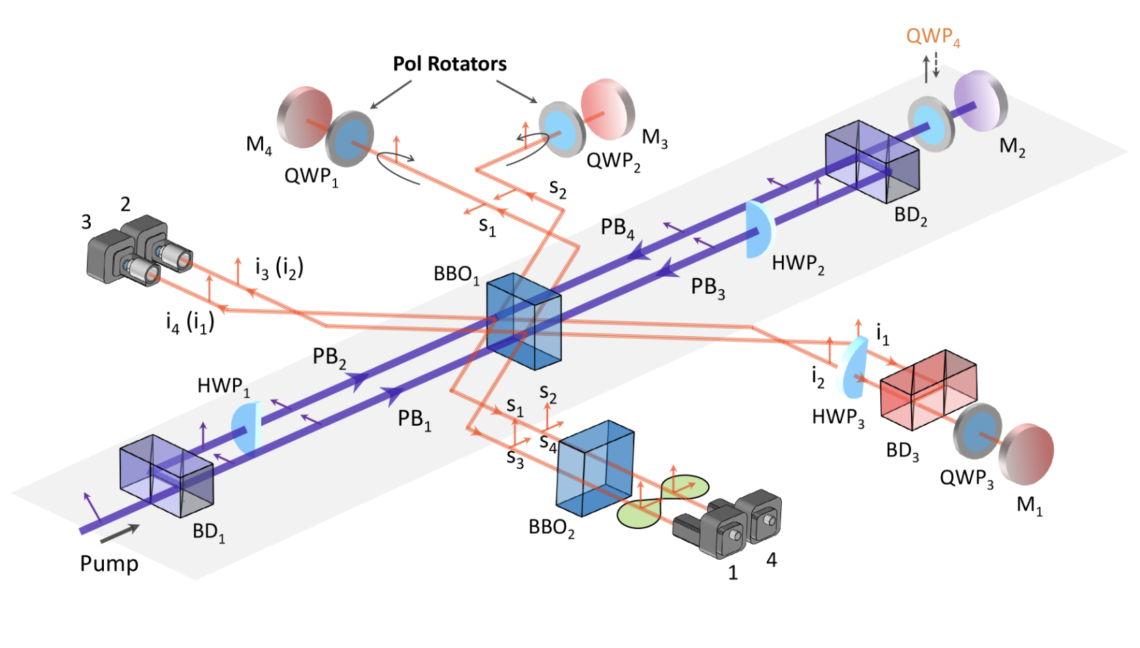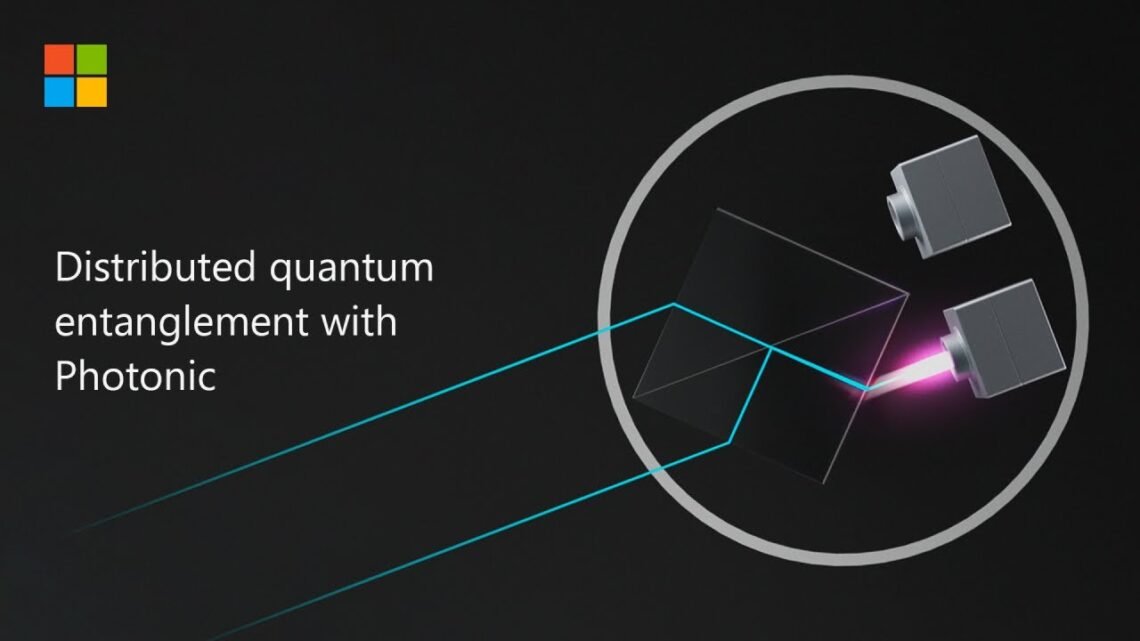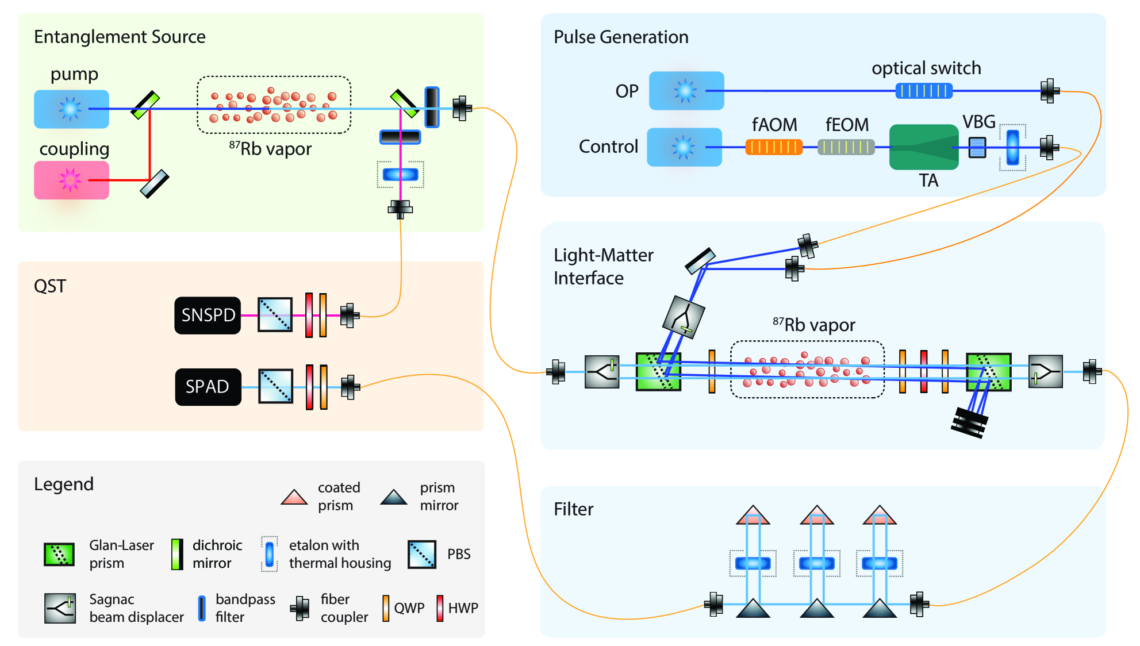Overview
Intricate Quantum Pathways
Physicists have discovered a forward-thinking technique for binding light particles in a quantum state known as entanglement, a critical stepping stone toward developing advanced quantum processors. This method, grounded in a complex mathematical notion known as non-Abelian holonomy, creates a reliable route for entanglement, sidestepping the need for powerful non-linear interactions or unpredictable quantum measurements.
Entanglement stands as a cornerstone of quantum physics, setting it apart from classic theories and powering the engine of burgeoning quantum technologies. Traditional tactics to entangle photons frequently hinge on additional particles or extra steps that rely on chance, making them non-deterministic. The newly devised strategy marks a departure from these methods, aiming for a direct, predictable connection between photons, which is essential for their use in practical quantum applications.

Advancing Past Established Quantum Interference
Moving beyond a well-known quantum interference phenomenon, the Hong-Ou-Mandel effect, researchers have now paved the way for the deterministic entanglement of several photons. Their work transcends the limitations of simple qubits (two-level quantum systems), allowing for the connection of more complex quantum states or qudits (multi-level systems). Such advancement holds promise for more efficient quantum information processing.
This approach is especially promising for quantum computing, as it simplifies state preparation and measurement, and offers a natural shield against specific types of noise. Additionally, it may harbor the potential to create a near-universal set of entangling gates—a pivotal tool for executing quantum computations with photons. This pioneering application of non-Abelian holonomy could reshape our approach to quantum computing with photons.
The technology underpinning this method is not only deterministic but also scales effectively, pointing to a future where photonic quantum technologies are both more reliable and efficiently integrated. Confirmation through experimental trials remains a crucial next step, along with examining practical use in quantum communication and computing. The horizon holds the integration of this method with other quantum systems to construct wide-reaching quantum networks.
Commonly Asked Queries
Enhancements in Computing Through Quantum Entanglement
Quantum entanglement allows particles to become interconnected in such a way that the state of one (spin, position, momentum) instantly influences the other, no matter the distance between them. In computing, this facilitates processes that are significantly faster than classical computers for certain problems, by enabling instantaneous information states without physical transfer of data.
Recent Breakthroughs in Quantum Entanglement for Computing
Scientists at the Georgia Institute of Technology have uncovered a new method to bind photons together more efficiently, a key step for quantum computing. This fresh approach uses complex mathematical concepts to entangle photons in a predictable way.

Application of Entangled Photons in Quantum Computers
Entangled photons serve as the backbone of quantum communication in quantum computers. They carry quantum bits, or qubits, which can represent both 0 and 1 simultaneously in superposition, vastly increasing computational power and data capacity.
Key Challenges in Photonic Quantum Computing
Photonic quantum computing faces hurdles like creating stable qubits and managing errors. Generating and maintaining qubit states with photons has proven difficult, and error correction is more complex than in classical systems.

Utilizing Entanglement for Greater Efficiency in Quantum Computing
Entanglement can potentially streamline quantum computing by reducing the need for quantum repeaters in communication and by simplifying complex calculations. The novel protocol described reduces the number of photons needed for computations, showing an advance in efficiency.
Distinct Features of the Novel Entanglement Technique
The new technique emphasizes determinism, where entanglement occurs predictably, as opposed to the probabilistic entanglement of previous methods. Such a deterministic approach improves reliability and may lead to new kinds of devices that use photons to perform complex quantum operations with greater precision.







































